Lions, tigers and bears? More like Eastern coyotes, moose, and Black bears…oh my!
That’s right—it’s time to give New Hampshire’s 500+ species of wildlife a spotlight. From the common White-tailed deer and Wild turkeys to the more reclusive moose and coyotes, there’s a host of natural wildlife all across the state that residents and visitors can observe—from a safe distance, of course. So where’s the best place to start? We posed the question to VisitNH’s social communities and came up with the top ten places to spot some natural wildlife around the state!
While the Black Bears at Clark’s may seem friendly enough, encountering one in the wild could be an entirely different story. So before you set out to try and catch a glimpse at some of our local flora and fauna, be sure to consult the NH Department of Fish & Game’s tools and techniques for wildlife viewing to keep us all safe, including the animals.
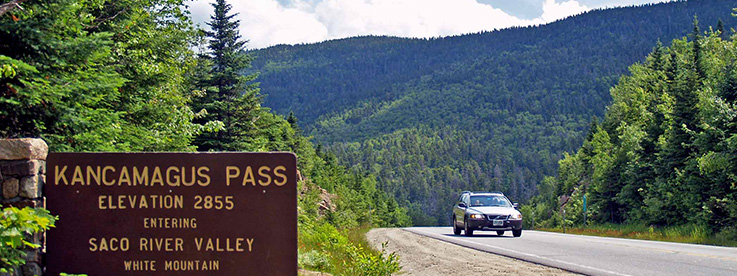
The Kancamagus is a scenic road stretching 56.4 miles through the White Mountain National Forest. The byway has remained largely undeveloped, so it’s no surprise that this stretch of road yields wildlife sightings all year long. Moose, White-tailed deer, Black bears, and many other small creatures such as Beavers, Raccoons, Porcupines, Fishers (locally known as Fisher Cats), are common sights along this beautiful ride. To increase your chances of spotting such wildlife, explore early in the morning or just around sunset. Make stops along the drive and safely venture out on the many local trails for the best chances!
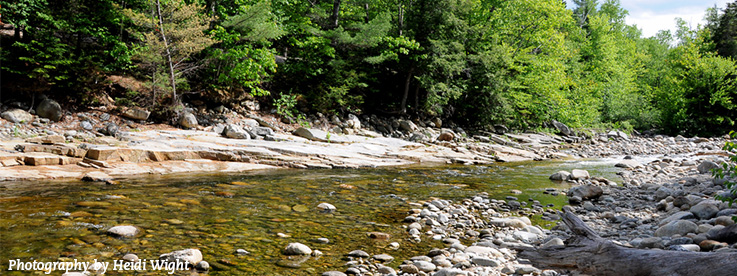
The historic Dolly Copp campground is located within the White Mountain National Forest at the base of Mount Washington. The rustic campground intertwines with the natural environment and wildlife sightings are not uncommon for campers during their stays. Veteran campers report seeing moose and Black bears in the local area as they are native inhabitants of the White Mountains. If you explore local trails, you could see white-tailed deer, bobcats, foxes, or even raccoons foraging in the woods. Look to the nearby Peabody River to see Rainbow Trout, and if the weather is cool enough, Brook Trout may be milling around the waters as well.
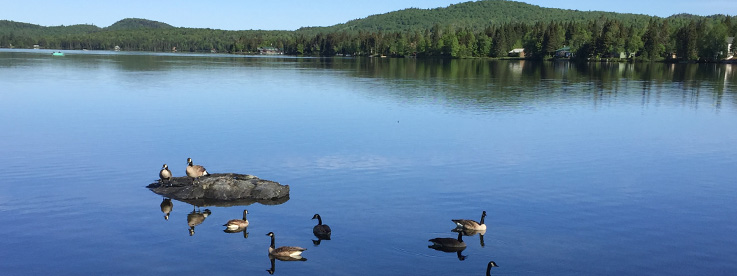
The town of Pittsburg itself is home to a host of natural wildlife. The rural forests and Northern proximity attract wildlife and make this spot a premier destination for animal sightings. A vibrant variety of birds can be seen flying the skies here, including Bald eagles, osprey, Gray jays, and Red-Winged Black birds to name a few. And native mallards, mergansers, Wood ducks, loons, and more can be found paddling local lakes and ponds. Moose are plentiful around these parts, especially in their active season from mid-May through July. Keep your eyes peeled for small snowshoe hare, beavers, Gray and Red foxes, Black bears, bobcats, coyotes, and other woodland residents!
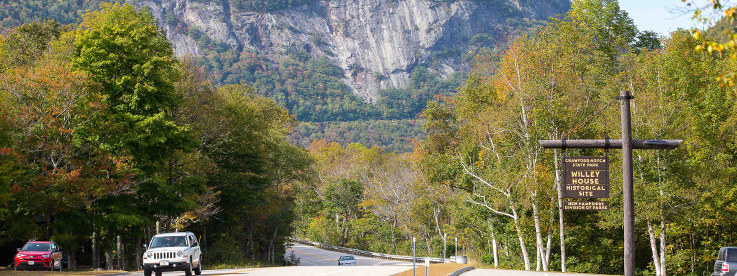
Crawford Notch is a major pass through the NH's White Mountains, and the state park itself spans 5,775 acres. Because of the expansive and unspoiled environment in and around the notch, many species of wildlife can be spotted including deer, Black bears, Wild turkeys, the occasional moose, and many more. The Saco River runs nearby and is a mecca for fly fishing as the waters are naturally clear and stocked each year with a horde of local fish. Brook, Brown, and Rainbow trout are common catches, with exceptional sizes totaling in over twenty inches in some cases!
Settled along the Pemigewasset River, the Country Bumpkins Campground is a great place to rest your head after a long day adventuring. But don’t be mistaken thinking the wildlife sightings are checked at the gate. Wildlife can be spotted within the campground itself, and guests report seeing White-tailed deer, Wild turkeys, Snowshoe hares, and many other friendly species year after year!
Plus, Clark’s Bears is located less than a mile away where a team of professionally trained bears perform dazzling tricks and shows for audiences far and wide. If the rest of your wildlife excursions were a bust, Clark’s is a sure-fire way to see some of the best of New Hampshire’s native Black bears in a fun and engaging way.

This 968 acre lake located in New Hampshire's Lakes Region is a serene escape into nature that's also a hub for local wildlife. Loons, Wood ducks, mallards, and the occasional Great Blue heron flock to the crystalline waters here, and Bald eagles routinely soar above the trees eyeing for prey. In the lake, warm water fish can be scouted including Smallmouth and Largemouth bass, Northern pike, and local panfish..The forests surrounding the lake provide home to a diverse mix of species including Wild turkeys, Ruffled grouse, bears, and a myriad of songbirds. Explore by boat or simply enjoy the local trails near the lake!

The beautiful town of Jackson is located in the northeastern part of the state. The town's collection of lakes, ponds, streams and rivers--coupled with its naturally forested environment make this an excellent place to scout wildlife. Deer and moose like to munch on the native vegetation of trees, bushes, and other local flora—as do foxes, Black bears, and other mammals which have been frequently spotted around town. In the waters, Brook and Rainbow Trout, largemouth and smallmouth bass, pickerel, perch, and bluegill are common catches in the Ellis River, Mirror Lake, and the East Branch Saco River!
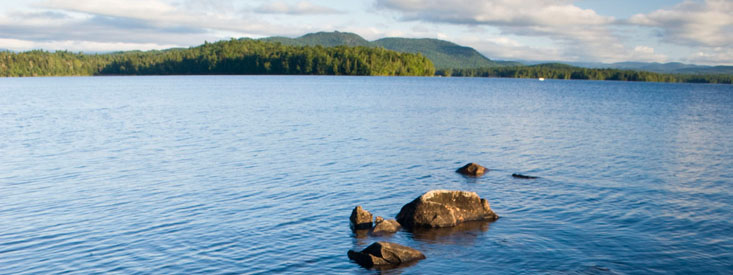
Head to Umbagog Lake National Wildlife Refuge in Cambridge for a peaceful excursion exploring the Great North Woods of New Hampshire. Reclusive Bald Eagles and Osprey have been known to fly overhead here, and moose, White-tailed deer, Black bears, coyotes, and foxes have routinely been seen milling around the lake. Paddle on a kayak or boat to see the loons and Brook trout, Landlocked salmon, Rainbow smelt, Yellow perch, and Pumpkinseed sunfish swimming in the waters. The moose particularly like to feed on pond aquatics in the early morning or around sunset, so plan accordingly if your goal is to see one of these notorious beasts.

Moose Alley is a locally-known stretch of Route 3 between Pittsburg and the Canadian border that is home to the state’s highest concentration of Moose! Roughly 4,000 of these impressive creatures populate this 13 mile stretch of Route 3 and are regularly spotted in the area year after year. If a moose-sighting is on your bucket list, now you know just the place to be! Make sure you have your camera ready, and remember to exercise caution if you do spot one.
Not lucking out? Don't worry—your hopes of finally spotting a Moose aren’t lost just yet! There are several local guides that offer moose safaris, some even boasting a 97% success rate for sighting moose on tour! Check out Pemi Valley Moose Tours in Lincoln, North Conway’s Moose Safari Tour, Gorham Moose Tours, and other local outfitters for professional wildlife excursions. With so many options, you’re bound to finally cross Moose-Sighting off your bucket list!
In the warmer months when wildlife is active, Great Pond in Kingston is an excellent spot to be on a hot summer day. The shores of Kingston State Park line a portion of Great Pond - offering sandy beaches, shady picnic areas, and trails to explore. In the woods, several bird species can be spotted including Downy woodpeckers, Brown creepers, Magnolia warblers, ovenbirds, and many more. On the pond, Green and Great Blue herons can be seen wading around the shores. Blanding’s and Spotted turtles make home in and around the shallow waters, and if you’re lucky, you just might spot one!